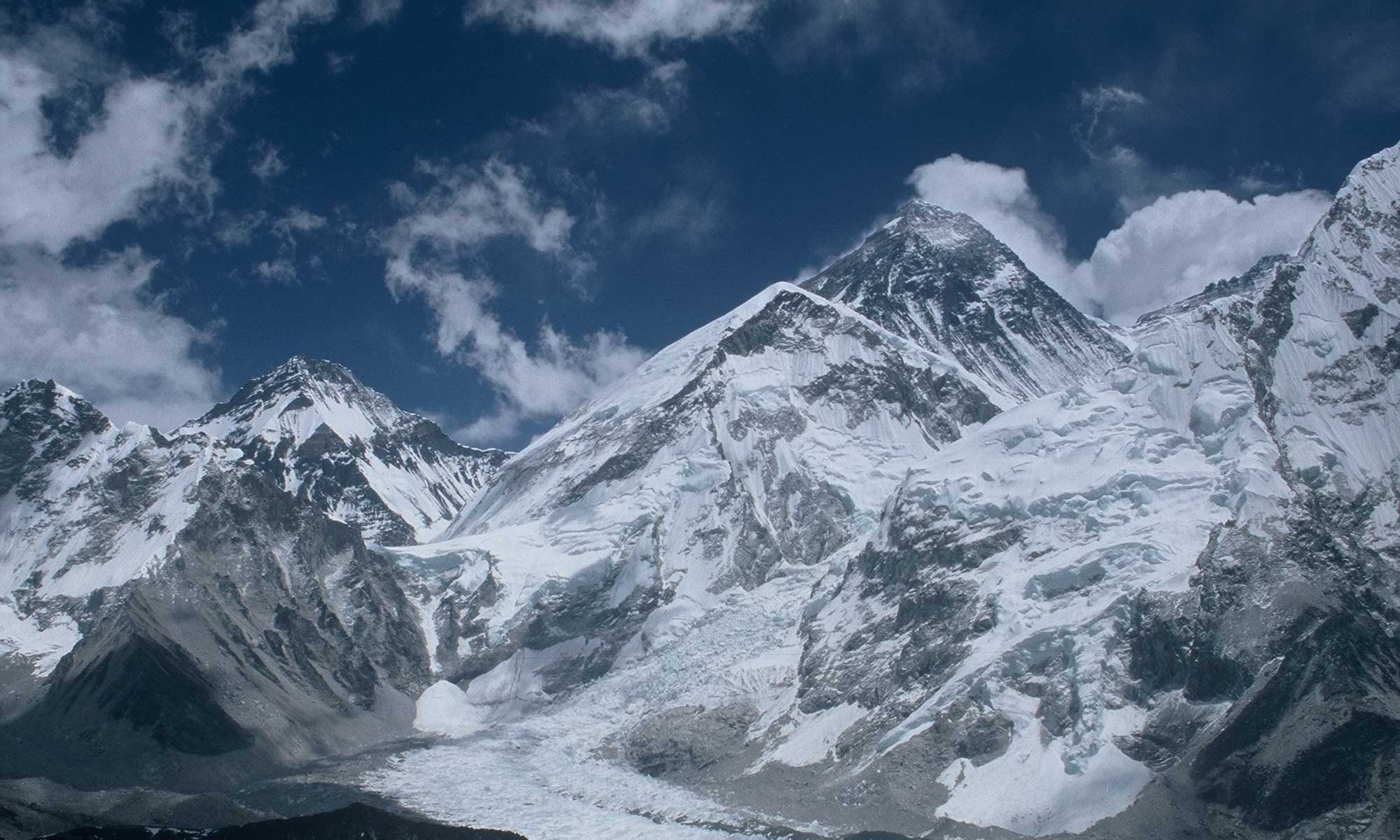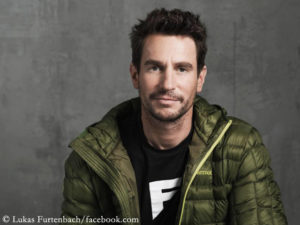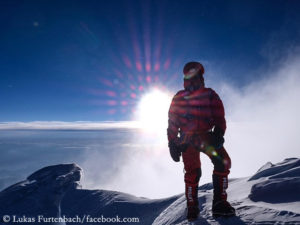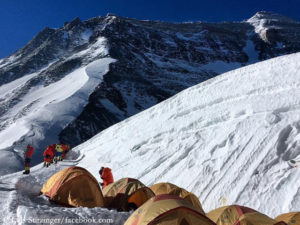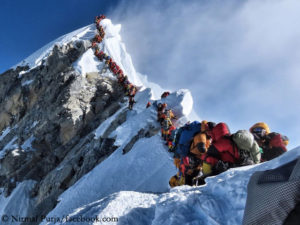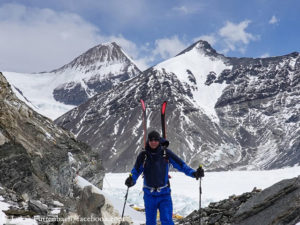Becoming everybody’s darling is certainly not one of Lukas Furtenbach’s goals in life. The 41-year-old Austrian doesn’t mince his words when he represents his points of view. He does this offensively and is also not afraid to name names when he criticizes someone. It’s obvious that he doesn’t make only friends by this. Furtenbach polarizes.
Five years ago, Lukas founded his company “Furtenbach Adventures”. In 2018, the operator offered for the first time an “Everest Flash Expedition”. The concept: Everest in four weeks – through targeted preparation with a specially developed hypoxia training and system, more bottled oxygen than usual, more Sherpas. “I have been using and experimenting with hypoxia for almost 20 years,” says Lukas.
He scaled Cho Oyu in 2006 and Broad Peak in 2007. Furtenbach reached the summit of Everest twice: in 2016 via the south side – and this year via the north side. In the past season he started with two groups: a “classic” Everest expedition with seven members and a flash expedition with five clients – in addition the mountain guides Rupert Hauer and Luis Stitzinger, 21 Sherpas and himself. All of them reached the summit. After his return Lukas answered my questions.
Lukas, the situation on the south side of Mount Everest has been discussed for weeks, but hardly anyone talks about the north side. How did you experience the season there?
This year, there were less people on the north side than for a long time past (142 permits), but everything concentrated on only two summit days. On the first of these two days – 23 May, the summit day for me and our first team with mountain guide Rupert Hauer – it was rather busy, you had to wait a little at the steps (the three rock steps on the Northeast Ridge). But it wasn’t bad, it was feasible. Our second team on 24 May led by Luis Stitzinger had to share the route with only about 30 other climbers. This year the base camp seemed a bit abandoned. All in all it was very pleasant.
Years ago, expeditions in Tibet were still considered a high-risk gamble for expedition operators because the Chinese-Tibetan authorities seemed to be unpredictable. What is the cooperation like today?
The cooperation with the CTMA (China Tibet Mountaineering Association) is very good and works reliably. Everest was closed in spring only once: during the 2008 Olympic Games in Beijing. The other closures affected fall seasons. China is seriously interested in making Everest safer. There are strict rules and requirements for operators. Those who do not work safely do not get permits anymore. The number of permits has been limited and will remain so in the future.
You offer both classic two-month Everest expeditions and so-called “Flash Expeditions”. Is the clients’ interest shifting towards shorter expeditions?
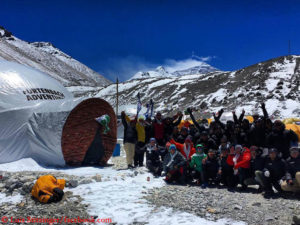
Yes, that’s a very clear trend. Especially now that we’ve been able to show two years in a row that Flash Expeditions work and that we always bring all members to the summit – and down again safe and sound. In the meantime, the critics have fallen silent, and hypoxia preparation is now widely accepted. With all the side effects: Operators who until recently denied the effectiveness of hypoxia and have no experience with hypoxia or shortened expeditions themselves, suddenly offer such expeditions.
I think we will soon see the first accidents. The topic is not quite so banal, and it is not enough to simply put yourself or your clients in a standard hypoxia tent and then hope on the mountain that everything goes well. We use our own hypoxia systems and our own program, which we have developed exactly to our requirements and tested over many years. Much of what is necessary for shortened expeditions also takes place on site and has to do with mountain logistics. Hypoxia at home is only one component of Flash Expeditions. Next year we will shorten our Classic Expedition to six weeks and the Flash Expedition to three weeks. The members of the Classic Expedition have also been using hypoxia tents since 2016.
Although there were no avalanche accidents or sudden falls in temperature this spring, eleven people died on Everest. How do you explain this comparatively high number?
Two fell; there was no further information what exactly happened in the cases of the two dead on the north side (one was found dead on the rope at the Second Step, supposedly during the descent; one died in Camp 1 in the tent); the remaining seven seem to have died due to high altitude problems or lack of oxygen supply. Finding a responsible person in these cases is always difficult.
If they were really too inexperienced and couldn’t assess their body, the situation or the right time to turn back (four of them were Indians who presumably had little or no mountain experience), you have to ask yourself who took them up there and what their motivation was. And if their death is actually connected to a lack of oxygen supply, you have to take the operators up on their promise and find out how they planned the summit day for their members: number of Sherpas per member, oxygen bottles per member, depots, experience of the Sherpas, mountain guide making decisions, oxygen flow rate, oxygen system used, reserve oxygen, available emergency medication, turn around time, etc.
The picture of the queue on the summit ridge on the south side on 22 May went around the world. Can such traffic jams be avoided from your point of view?
These traffic jams have actually existed for a long time. In 2016, we were also caught in such a traffic jam. That’s why we switched to the north side. They don’t even occur when there are several summit days in a good season. This year there were fewer summit days in Nepal due to the weather, and many teams counted on 22 May, because this day was predicted by the weather services as the first real summit day, after the rather windy summit days on 15 and 16 May.
From the outside, it sometimes seems as if the Everest market was like the Wild West. Is this impression deceptive?
It is a rough market, and it is not always played fair by everyone. But the client usually doesn’t notice this, and among most operators there is also a kind of gentlemen’s agreement. A lot happens in the background. But one could write exciting books about this business…
The summer season in the Karakoram is just around the corner. Do you think that this spring’s discussions in the Himalayas will be repeated there?
Not on the Gasherbrums and Broad Peak, there is not enough going on. But on K2 we have a different situation. Permit numbers have been rising significantly for three, four years. And because of the barely available good campsites in Camp 1, 2 and 3, the K2 normal route via the Abruzzi Spur can only tolerate a limited number of teams. I think we’ll see problems here soon. Unfortunately in the Karakoram the system of fixed rope fees does not work as well as it does in China or Nepal. One or two commercial teams do the rope-fixing on a mountain and that costs a lot of money. Some teams pay a fee voluntarily, but many refuse – especially individual climbers who travel with local operators and contribute neither equipment nor work. This is one reason why we see currently so few summit successes on Gasherbrum I and II.
